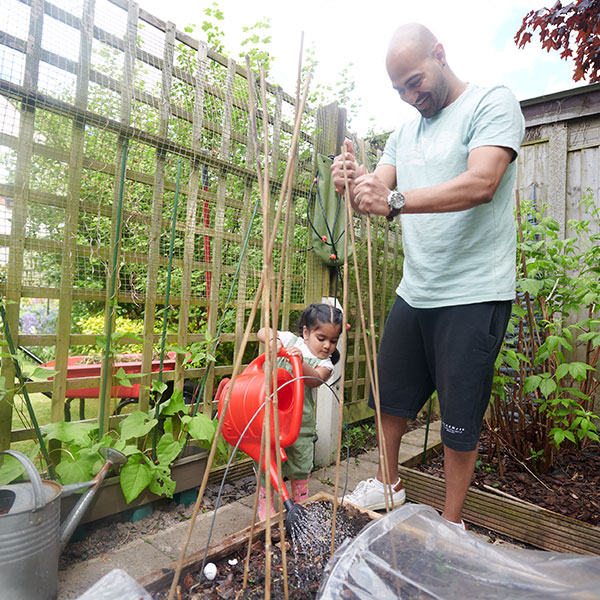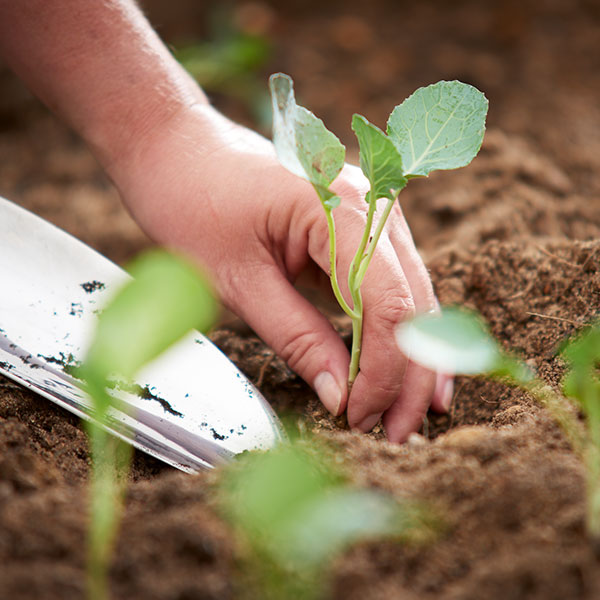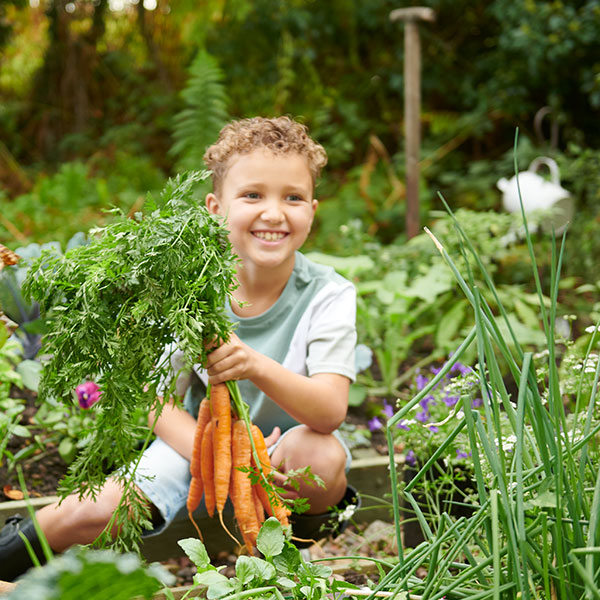Looking to add a pop of colour to your garden this spring? Or maybe you fancy trying your hand at growing your own fruit and veg, but don’t know where to start? Don’t worry, no matter the size of your outside space, here’s an easy guide to potting and planting that will help get you to get out and love your garden.
 By Eden
By Eden- 20th Feb 2023
- 7min read
- This blog was updated on 22nd May 2025
Step 1 – Grow your own
Interested in growing your own plants, fruit or veg from scratch? The first thing to do is pick your seeds! Some of the easiest and most rewarding seeds to grow include sunflowers, tomatoes, peas and beans – so they’re a great place to start.
Once you’ve picked your seeds it’s time to get potting. For this you’ll want some small pots, or seed trays, and some compost. Add a layer of compost to the bottom of your pot, sprinkle your seeds on top, and then cover with more compost. Give your seeds a light watering, keeping the soil damp but not overwatered. You should see some growth within one to three weeks, so keep checking on your little seedlings.
Here are some simple potting dos and don’ts to bear in mind:
- Don’t just use garden soil. Compost, such as our lightweight multi-purpose compost, will give your seedlings a much better start
- Do leave them in a sunny spot, so they get lots of natural light
- Do lightly water your plants each day
- Don’t overwater your plants. A propagator will help keep the perfect environment for your seedlings
- Do use pots that have drainage holes. This will allow any excess water to drain away so your seedlings don’t get waterlogged
Top tip – find out the best times to plant your seeds using our veggie calendar!

Step 2 – Re-potting and planting
Now your seedlings are thriving, you might want to start thinking about re-potting them in a bigger plant pot, or even planting them in the garden. If this is your plan, start slowly introducing your plants to the outside world by taking them out for a few hours a day.
There are a few signs to look for that let you know it’s time to re-pot or plant your seedlings out:
- Roots are growing out of the bottom of the pot, or the roots are pushing your plant up and almost out of the pot
- The plant has grown much wider and taller than the pot
- You’ve noticed the plant has stopped growing
When you’ve decided your plants need a new home, start by gently removing the plant from its current pot. Turning the plant sideways and tapping the bottom of the pot often helps to ease it out. If you have one of our Easy Release Clever Pots, simply push the base up, tilt and remove your plant. Then loosen the roots a little, giving them space to breathe.
If you’re planning on re-potting your seedling into a bigger plant pot, first add some new multi-purpose compost to your chosen pot. Fill it most of the way before making a dip in the compost using your trowel. Carefully place your seedling into this dip, packing any gaps in with soil to support your plant. Then water it and pop it in its new home. Don't be tempted to pop your plant in a pot that's too big, or it could end up getting waterlogged and being very unhappy!
If you’re planning on transferring your plant out into your garden, first dig a hole that’s a little bit bigger than the pot your seedling’s already in. Take the plant from its pot and place it in the hole, filling any gaps with your multi-purpose compost. Finally, water your plant generously.
Top tip – make sure the winter frost has passed before you take your plants out into the garden!

Step 3 – Enjoy your garden!
Now you’ve got your garden looking exactly how you want it, let’s keep it that way! All you need to do now to keep your plants in tip-top shape is to give them a water regularly.
You might also want to give your plants some feed to really get them blooming. Here are three different types of plant food and fertilisers you might find useful, though we do recommend you check the packaging first to find out what works best for you:
- Liquid concentrate – a fast-acting formula that you add water to
- Pellets – a slower, longer lasting fertiliser that you add directly to the compost
- Ready-to-use-liquid – another fast-acting fertiliser that’s super easy to use
Time to relax and enjoy your garden with your family and friends - we’re rooting for you!

Let us know any of your top gardening tips over on our social channels: Facebook, Instagram, TikTok & X